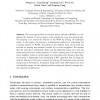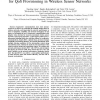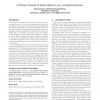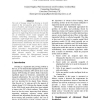2129 search results - page 60 / 426 » Reliability of Wireless Sensor Network with Sleeping Nodes |
108
click to vote
UIC
2007
Springer
15 years 4 months ago
2007
Springer
Abstract. The coverage problem in wireless sensor networks (WSNs) is to determine the number of active sensor nodes needed to cover the sensing area. The purpose is to extend the l...
107
click to vote
GLOBECOM
2009
IEEE
14 years 7 months ago
2009
IEEE
Abstract--Cooperative communications have been demonstrated to be effective in combating the multiple fading effects in wireless networks, and improving the network performance in ...
SENSYS
2004
ACM
15 years 3 months ago
2004
ACM
The enormous potential for wireless sensor networks to make a positive impact on our society has spawned a great deal of research on the topic, and this research is now producing ...
PPOPP
2003
ACM
15 years 3 months ago
2003
ACM
Sensor networks are long-running computer systems with many sensing/compute nodes working to gather information about their environment, process and fuse that information, and in ...
WOWMOM
2006
ACM
15 years 3 months ago
2006
ACM
The cost of damage caused by flooding is directly related to the warning-time given before a flood occurs. Therefore, improving the coverage, accuracy and reliability of flood pre...




